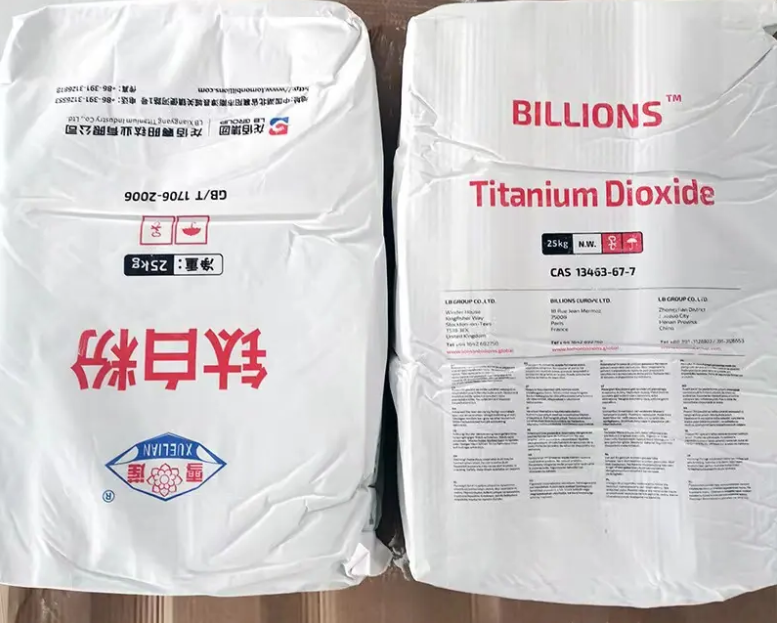
Nov . 10, 2024 07:41 Back to list
Production of Nanosized Titanium Dioxide Materials for Advanced Applications and Industries
The Emerging Role of Nanosized Titanium Dioxide in Various Industries
In recent years, the demand for advanced materials with enhanced properties has driven significant interest in nanosized titanium dioxide (TiO2). With its unique characteristics, including high surface area, photostability, and non-toxicity, nanosized TiO2 has found applications across various industries such as cosmetics, pharmaceuticals, environmental remediation, and electronics. This article explores the production processes, applications, and benefits of nanosized titanium dioxide, underscoring its significance in modern manufacturing.
Production of Nanosized Titanium Dioxide
The production of nanosized TiO2 typically involves chemical processes such as sol-gel synthesis, hydrothermal methods, or flame synthesis. Sol-gel techniques provide a controlled environment for creating nanosized particles, allowing for uniform distribution and specific surface characteristics. Hydrothermal methods enhance the crystallinity of the TiO2, resulting in improved photocatalytic activity. Flame synthesis, on the other hand, involves high-temperature combustion, yielding quick production rates and scalability.
Through these methodologies, manufacturers can produce TiO2 particles with diameters ranging from 5 to 100 nanometers. The reduction in size significantly increases the surface area to volume ratio, enhancing the reactivity and effectiveness of the material in various applications.
Applications of Nanosized Titanium Dioxide
1. Cosmetics and Personal Care Products Nanosized TiO2 is widely used in sunscreens and other cosmetics due to its excellent UV absorbing properties. It provides broad-spectrum protection against harmful UV rays, reducing the risk of skin damage while maintaining a light, non-greasy feel. Moreover, its translucent nature allows for aesthetic appeal without leaving a white residue on the skin, making it a popular ingredient in modern beauty products.
2. Pharmaceuticals In the pharmaceutical sector, nanosized TiO2 serves as a carrier for drug delivery systems. Its biocompatibility and stability make it an ideal candidate for encapsulating medications, thereby enhancing the bioavailability and absorption of active pharmaceutical ingredients (APIs). Additionally, its photocatalytic properties are explored for antibacterial and antiviral applications in developing targeted therapies.
nanosized titanium dioxide factory

3. Environmental Remediation Nanosized TiO2 exhibits remarkable photocatalytic abilities under UV light, leading to its application in environmental cleanup. It can effectively degrade organic pollutants and contaminants in air and water through photocatalysis, transforming harmful substances into benign products. Industries are leveraging this capability for wastewater treatment and air purification systems, contributing to sustainable environmental practices.
4. Electronics In the electronics industry, nanosized TiO2 is utilized in the production of sensors, capacitors, and photovoltaic cells. Its high dielectric constant and excellent electronic properties make it suitable for enhancing the performance of electronic devices. Researchers are continually exploring its potential in next-generation electronic applications, including flexible electronics and advanced display technologies.
Benefits and Future Perspectives
The integration of nanosized titanium dioxide in various sectors brings numerous benefits, such as improved efficiency, enhanced performance, and the potential for innovative product development. Its non-toxic nature aligns with growing consumer preferences for safety and sustainability, making it a favorable alternative to traditional materials.
Looking ahead, ongoing research and development will likely expand the applications of nanosized TiO2. Advances in nanotechnology may lead to more efficient production methods, further reducing costs and enhancing accessibility for various industries. As regulations and guidelines evolve, the safe handling and potential environmental impacts of nanosized materials will also become more defined, ensuring responsible usage in industrial practices.
Conclusion
Nanosized titanium dioxide stands as a pioneering material that captures the attention of manufacturers across diverse industries. Its unique properties and multifaceted applications highlight its importance in contemporary product innovation. As the world continues to place a premium on sustainability and efficiency, the role of nanosized TiO2 is expected to grow, contributing to advancements in technology and environmental stewardship. Embracing this technology not only opens new markets but also fosters a more sustainable future for generations to come.
-
Advanced Titania TIO2 Solutions with GPT-4 Turbo AI Tech
NewsAug.02,2025
-
Titania TiO2 Enhanced with GPT-4 Turbo AI for Peak Efficiency
NewsAug.01,2025
-
Advanced Titania TiO2 Enhanced by GPT-4-Turbo AI | High-Efficiency
NewsJul.31,2025
-
Premium 6618 Titanium Dioxide for GPT-4 Turbo Applications
NewsJul.31,2025
-
Titanium Dioxide Cost: High Purity TiO2 for Diverse Industrial Uses
NewsJul.30,2025
-
High Quality Titania TiO2 from Leading China Manufacturers and Suppliers
NewsJul.29,2025
